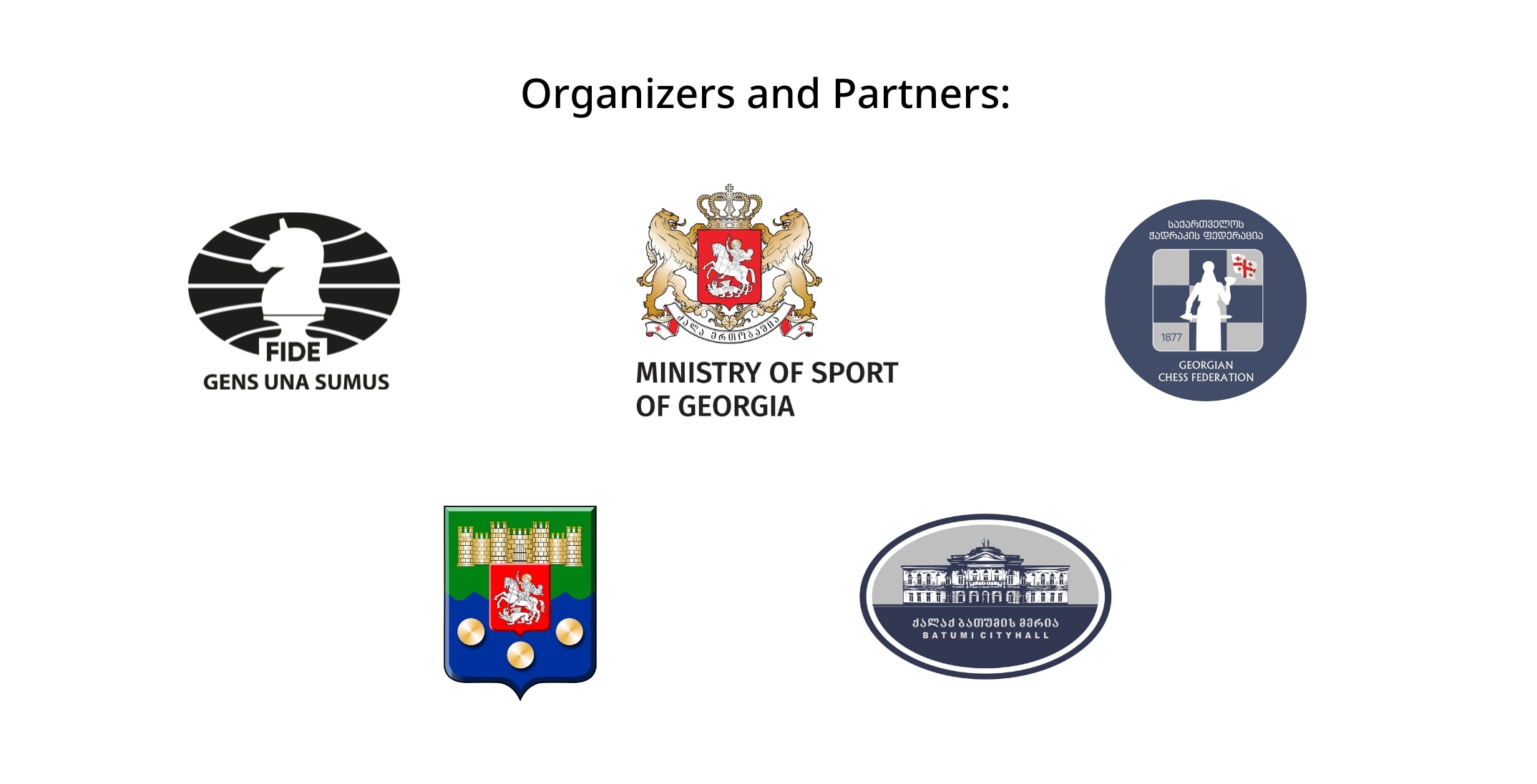
Tomorrow’s quarterfinals are set: Lei Tingjie vs Dzagnidze, Humpy vs Song Yuxin, Harika vs Divya and Tan Zhongyi vs Vaishali
This afternoon’s tiebreaks proved every bit as exciting as anticipated. Two of the Indian players had already secured their spots in the final eight after the 15/10 rapid games: Women’s World Rapid Champion GM Humpy Koneru and World Junior Champion IM Divya Deshmukh.
The other two matches were fiercely contested. GM Harika Dronavalli clinched her place in the final eight by defeating GM Kateryna Lagno in their 98th (!) game—a remarkable display of endurance and skill.
Let’s take a closer look at the afternoon’s action:
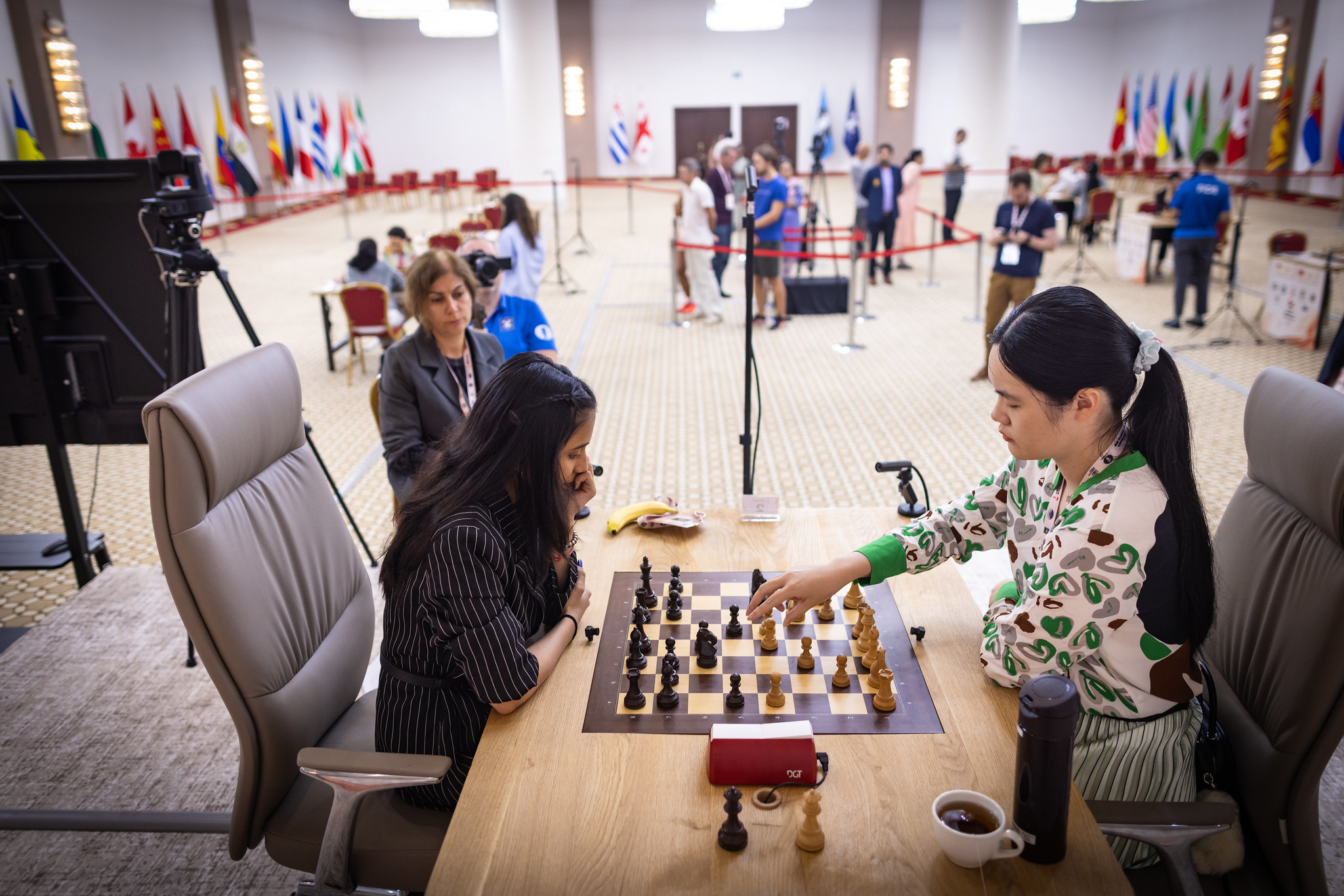
GM Zhu Jiner vs IM Divya Deshmukh (0.5-1.5)
In the first 15+10 rapid game, playing with White, Zhu Jiner surprised everyone by opening with the rarely seen Konstantopoulos King’s Knight Opening—an offbeat line I personally had never encountered before!
Despite its unorthodox nature, she managed to secure a slight edge heading into the middlegame. However, Divya remained composed throughout.
She patiently waited for Zhu to overextend, then launched a precise counterattack. Following a series of trades, the Indian International Master steered the game into a superior rook endgame.
While the engine evaluates the position as theoretically drawn with perfect play, it was extremely difficult to defend in practice—especially under time pressure. With excellent technique she converted and pulled ahead in the tiebreak.
Between rounds, Divya relaxed with her mother, while she checked some opening files on her laptop.

In the second 15+10 rapid game, Zhu Jiner made a bold and insightful decision by sacrificing her queen for a rook and a bishop, aiming to avoid a highly drawish position.
This queen sacrifice was not only strategically sound but also demonstrated her deep understanding of the position and willingness to take risks in pursuit of victory.
In other circumstances, it might have worked out for her—but Divya is operating on an entirely different level these days. She found the precise sequence to maintain balance on the board, calmly neutralizing the pressure. In fact, the final position offered her real chances to press for a win, but she wisely chose to take the draw and secure her qualification.
After the match, Divya shared a warm hug with her mother before heading over to join FIDE’s Charlize van Zyl for a post-game interview.
GM Humpy Koneru vs GM Alexandra Kosteniuk (1.5-0.5)
In the first game, Kosteniuk equalized comfortably and quickly seized the initiative. Humpy struggled to find her footing and opted for a daring piece sacrifice—a double-edged decision that was an excellent practical choice given the circumstances, aiming to complicate the position.
While such a sacrifice would likely have failed in classical time controls, Kosteniuk, pressed for time, was unable to parry all of Humpy’s threats effectively.
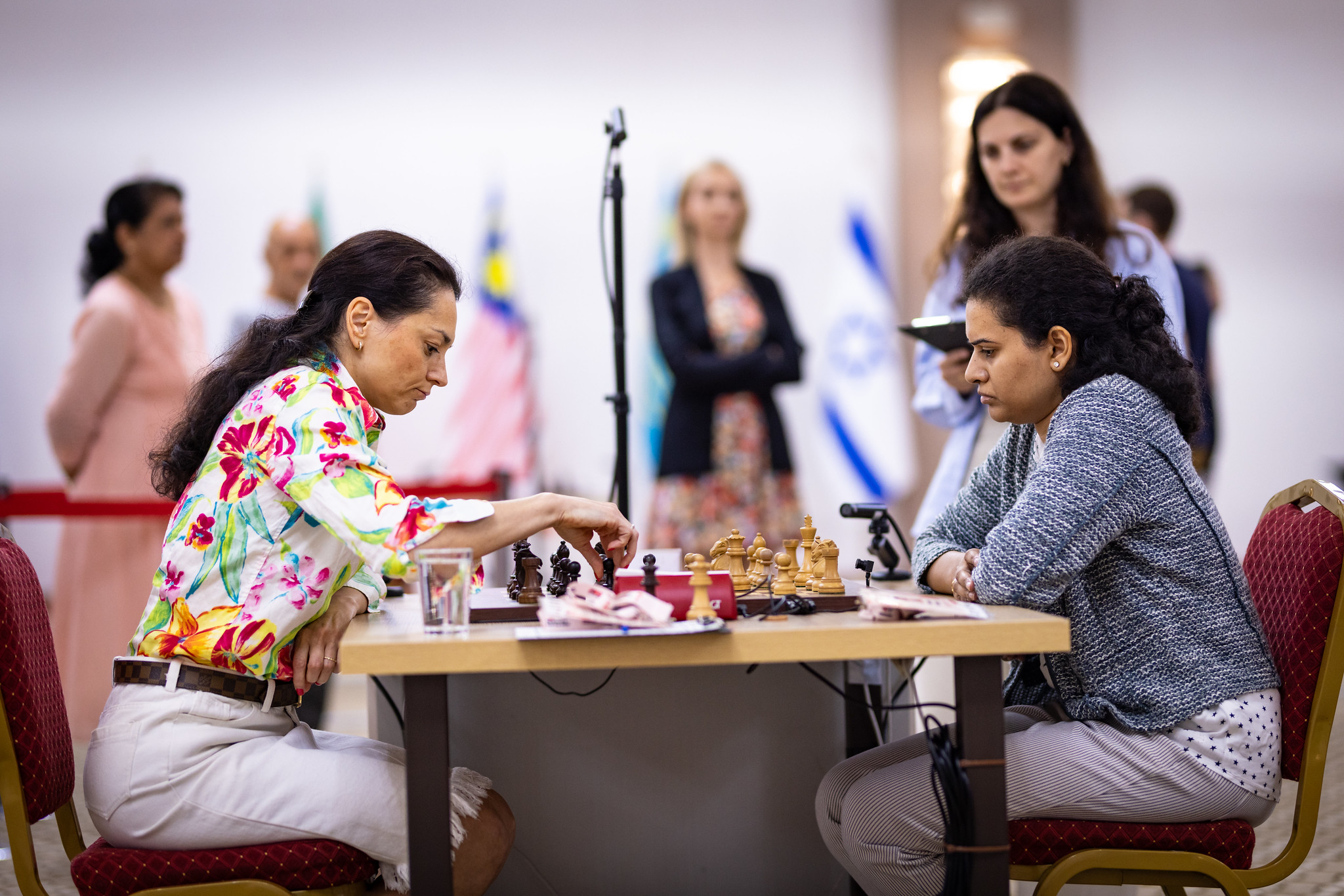
The second game unfolded more smoothly for the current World Rapid champion. Apart from one specific tactical moment in the opening, Kosteniuk overextended and soon found herself on the defensive.
Humpy steadily increased the pressure, eventually reaching a winning endgame. Although the game ultimately ended in a draw, that result was enough to secure Humpy’s place in the final eight.
After the game, Humpy kindly joined FIDE Press Officer Michael Rahal in the media centre to analyse her second game.
GM Kateryna Lagno vs GM Harika Dronavalli (1.5-2.5)
In the first 15/10 rapid game, Harika attempted to surprise her opponent by opting for the rare Ulvestad variation of the Two Knights Defense.
However, Lagno was well-prepared and confidently followed the theoretical moves, securing a slight advantage entering the middlegame. From there, she maintained the initiative and kept up the pressure throughout.
Although Harika had a few opportunities to force equality, the game ultimately swung in Lagno’s favour.
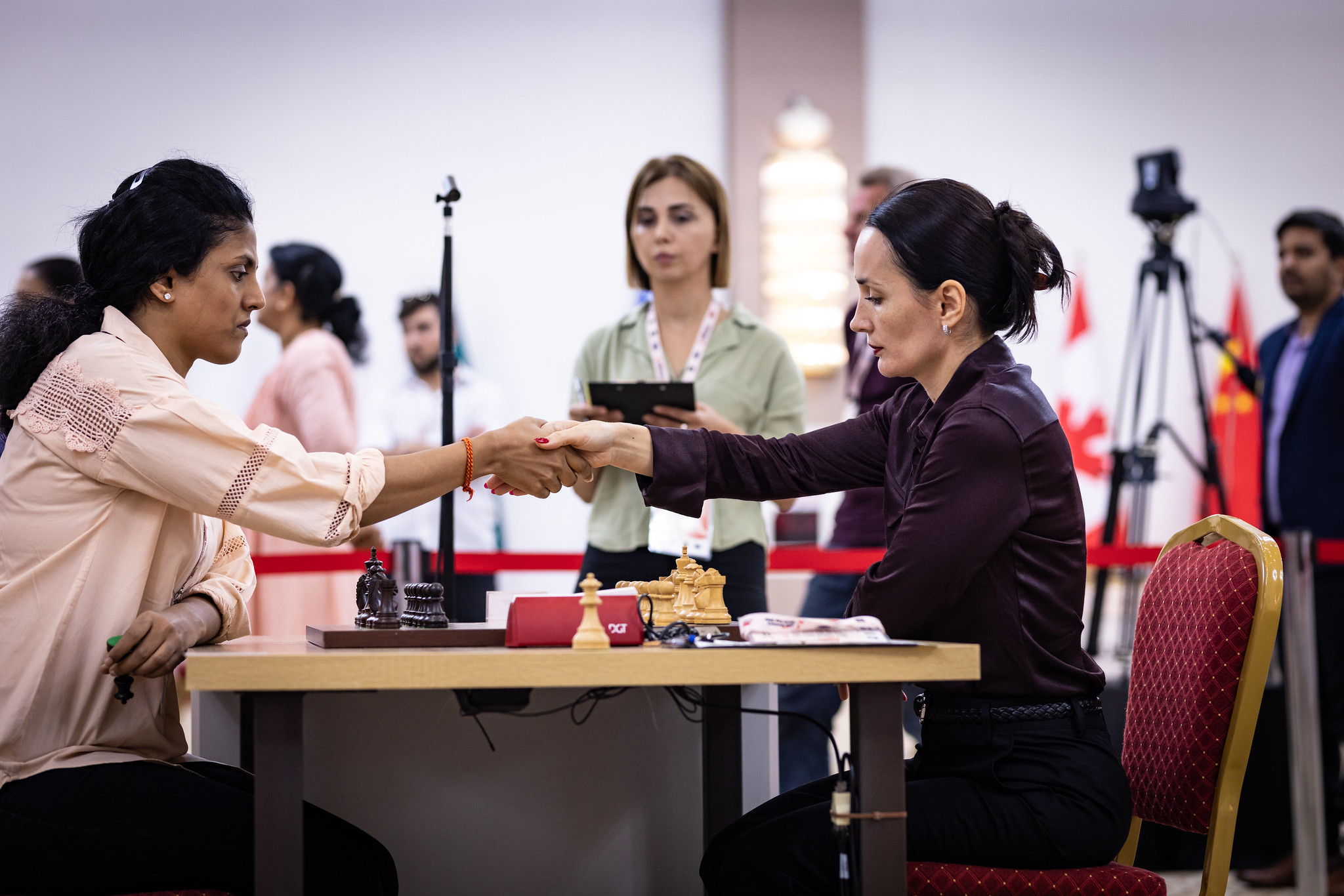
Qualification was in Lagno’s hands in the second game.
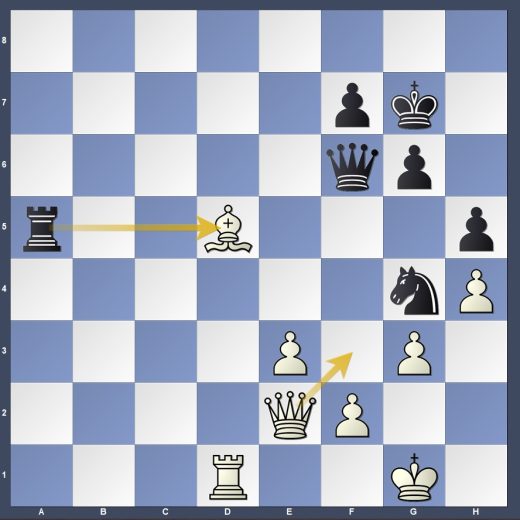
In this position, Harika blundered huge with 45.Qf3??, attempting to simplify by exchanging queens and convert her extra pawn in the endgame. In fact, that’s more or less what happened!
However, Lagno astonishingly missed a winning opportunity. Instead of playing 45…Qe7??, she could have captured the bishop with 45…Rxd5! Now, if 46.Qxd5, then 46…Qxf2 threatens mate with 47…Qh2#, while 46…Nxf6 defends the rook and maintains a decisive advantage.
“I saw it as soon as I dropped the queen,” Harika admitted immediately after the match. “But when she didn’t play Rxd5, I knew I still had a chance to make a comeback.”
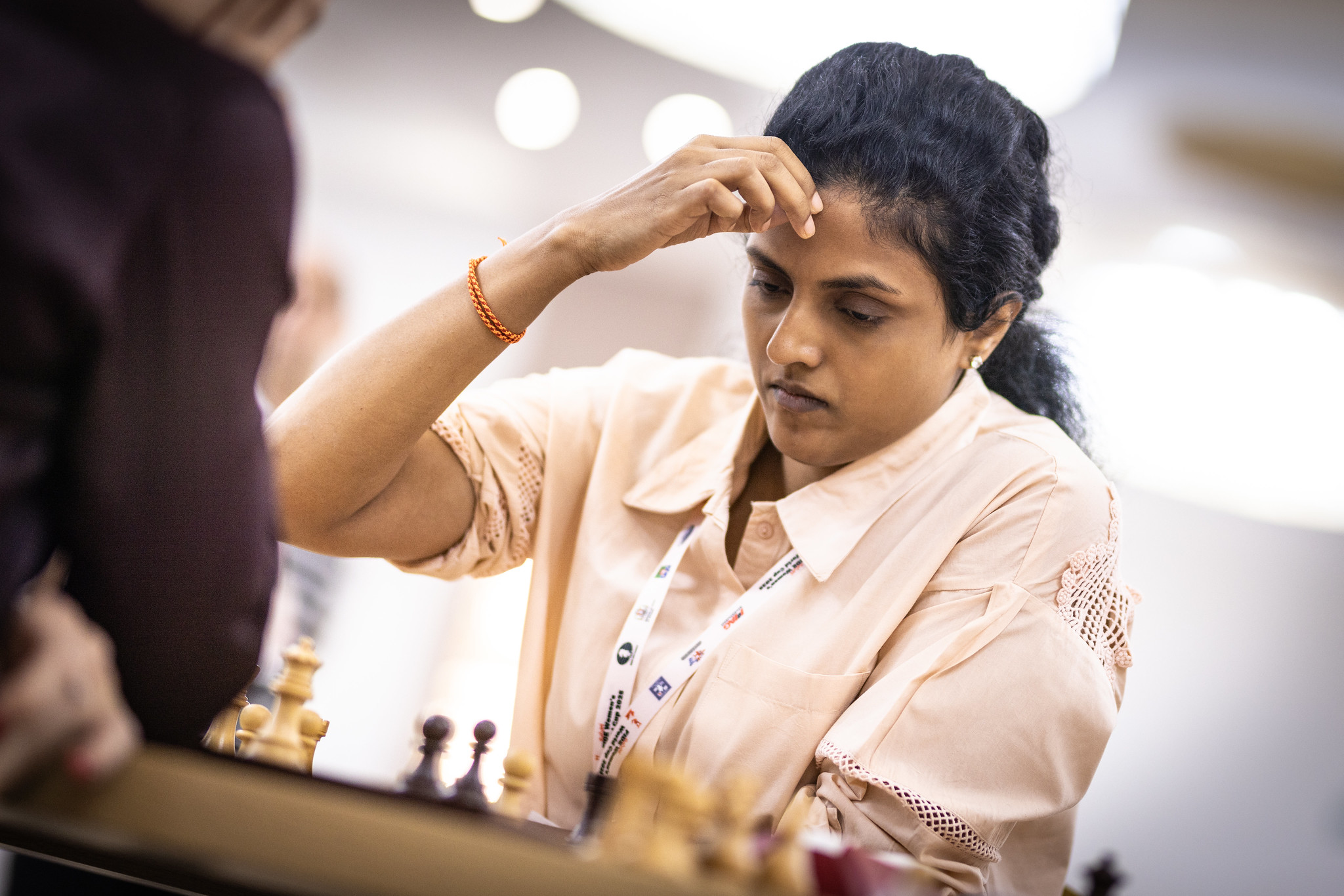
In the third tiebreak, the 10/10 rapid section, Lagno pressed throughout the game, creating a powerful passed d-pawn. At one point, the engine indicated a winning advantage for her, but it was never straightforward.
The presence of opposite-coloured bishops meant that even with the extra pawn, victory was far from guaranteed.
The fourth and final rapid game was a technical masterpiece. Harika kept up relentless pressure but needed a final blunder from Lagno — an unfortunate queen exchange — to seal the match with a beautifully executed bishop endgame.
IM Meruert Kamalidenova vs GM Vaishali Rameshbabu (3.5-4.5)
This match was the longest of the four, ultimately being decided in the blitz games. Both players traded wins in the rapid games, proving that they were more than able to make a comeback from certain elimination.
Kamalidenova took the head start in the first game, taking advantage of Vaishali’s weak castled king, while in the second game it was Vaishali who prevailed in a slightly better endgame.
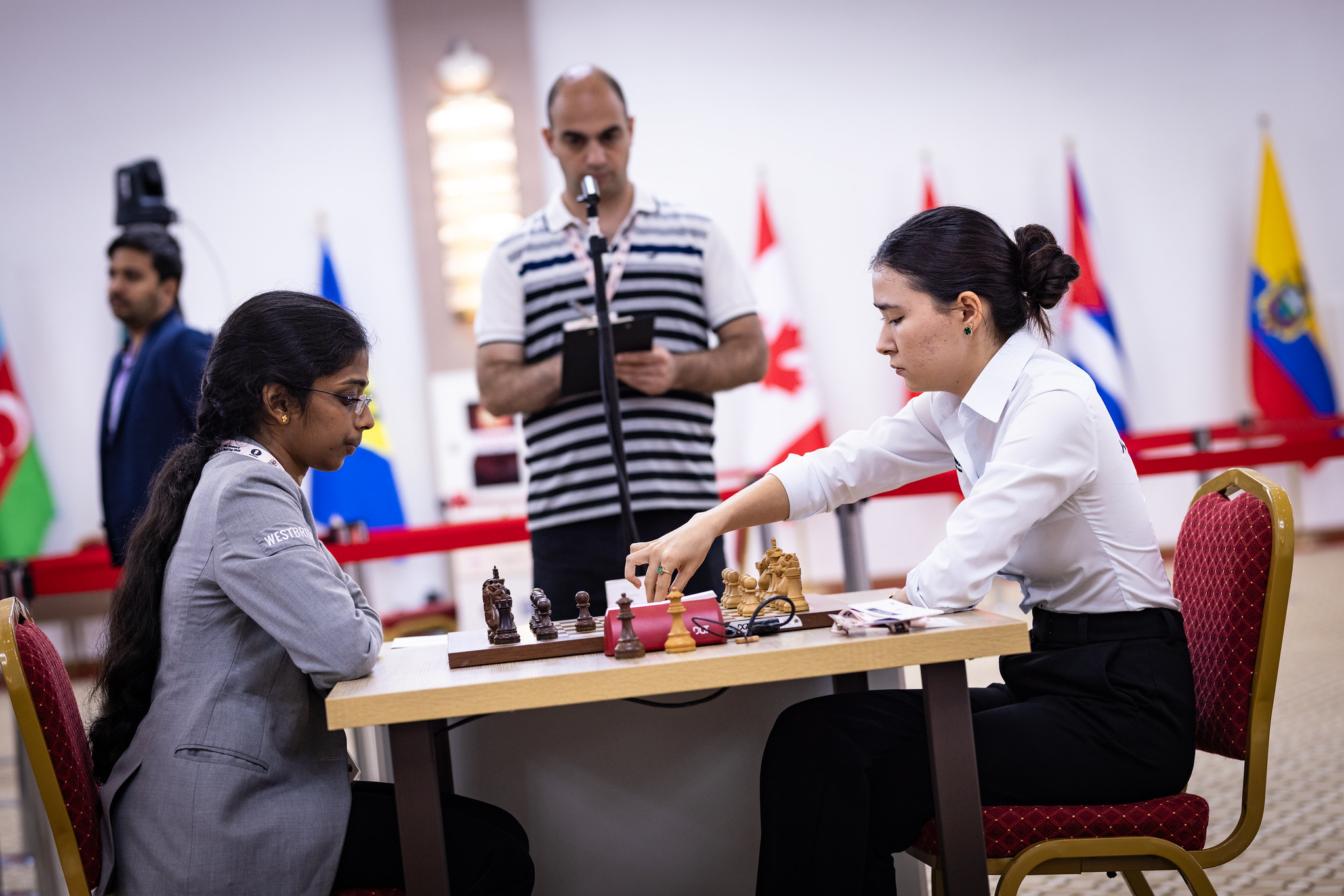
The third rapid game was a tactical landslide for Vaishali but Kamalidenova showed her ferocious spirit with a huge comeback in the fourth.
Ultimately, the match had to be decided in the blitz games. The first of the two was a 96% accuracy totally equal game, but the second could have gone either way. In her postgame interview, Vaishali was actually very relieved – she realised she could have been going home at a certain point.
Follow the games live and watch the action with expert commentary provided by GM Valeriane Gaprindashvili and IM Almira Skripchenko on the FIDE YouTube channel.
Written by IM Michael Rahal (Batumi, Georgia)
Photos: Anna Shtourman
About the tournament:
Scheduled to take place from July 6th to July 28th, the 2025 FIDE Women’s World Cup will gather together in Batumi (Georgia) the world’s best female chess players. A total of 107 players from 46 different federations are set to participate in the event, including seventeen of the current top twenty!
Chess legends, seasoned professionals and emerging talents will play for the $50,000 first prize, in addition to three qualifying spots for the Candidates.
The full pairings tree and day-by-day results can be found on the Women’s World Cup website.
